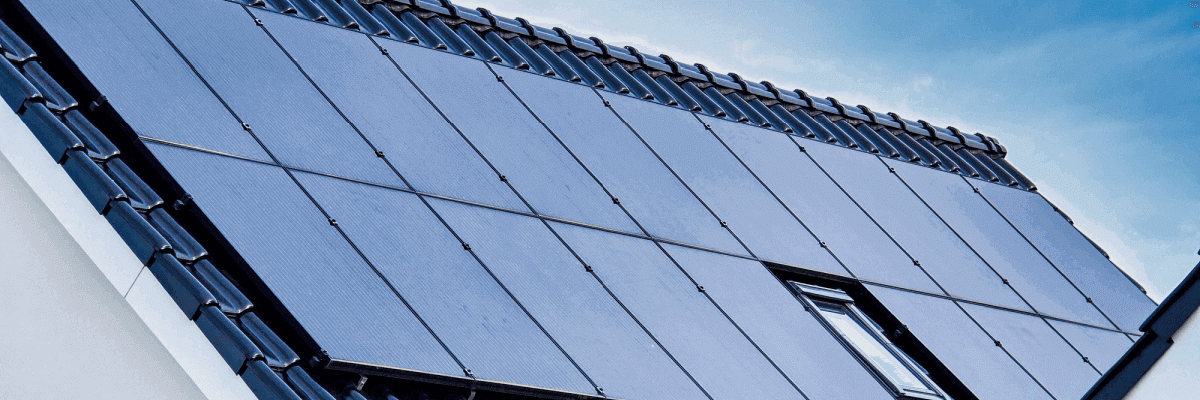KEY POINTS
- The sun tax is a rooftop solar tariff in Australia, designed to encourage solar users to export excess solar to the electricity grid during times of high demand.
- The sun tax, or two-way tariff, was introduced to lessen grid congestion by imposing a cost on households exporting solar electricity when it isn’t needed.
- The sun tax affects existing solar feed-in tariffs by changing the hours a customer can export solar without incurring a cost.
Note: This is a general guide only, please check your state government or distributor pages for more information.
On this page:
Advertisement
What is the sun tax?
The sun tax, otherwise referred to as a two-way rooftop solar tariff or two-way pricing, is an export tariff for solar customers on solar feed-in tariffs (FiTs).
Introduced in 2021 as part of a two-way pricing structure, the sun tax charges solar customers for solar exports at times of network overload.
Customers can export during times of high demand for a FiT, helping ease pressure on the electricity grid. Electricity supply disruptions will hopefully lessen, with households being encouraged to ‘solar soak’ (use their own solar power) before exporting it to the grid.
By encouraging solar customers to change the times they export solar, renewable energy wastage will lessen and could instead help to support energy supply for households and businesses on the grid.
Who will be impacted by the sun tax in 2025?
← Mobile/tablet users, scroll sideways to view full table →
| State | Active sun tax? |
|---|---|
| NSW | From July 2025 |
| SA | From July 2025 |
| QLD | Potentially July 2026 |
| VIC | No |
| TAS | No |
Sun tax in NSW
July 2024 saw distributors in NSW introduce an opt-in two-way tariff for new and existing residential and small business customers. From July 2025 onwards, Ausgrid adapted this tariff to apply to all export ready customers.
The charges of the sun tax will vary depending on your electricity distributor and how your state’s electricity supplier has or will incorporate the sun tax. Your distributor will also determine the export free threshold.
For example, the sun tax in NSW on the Ausgrid network according to its tariff structure statement:
- Customers pay 1.23c/kWh for solar exports between 10am-3pm, once the export level has been exceeded.
- Customers are paid 3.85c/kWh for exports between 4pm-9pm.
The sun tax only applies to areas that are part of the National Electricity Market (NEM), so solar owners in Western Australia and the Northern Territory are excluded.
Sun tax in Queensland
The Australian Energy Regulator (AER) rejected a draft proposal to introduce an opt-in sun tax for July 2026.
Energex, the electricity distributor in South East Queensland, and Ergon Energy, the distributor for regional Queensland, recommend that solar customers utilise solar soaking.
Solar soaking means using your own solar at home, which will help to lower energy bills and avoid the solar tax.
Sun tax in Victoria
The Victorian Government has not endorsed a sun tax in the state yet and it looks as though the Victorian distributors are also not considering it.
Powercor, one of Victoria’s five electricity distributors, claims that it won’t be passing on a mandatory two-way ‘sun tax’ to its customers.
Powercor has proposed that it will instead introduce a two-way opt-in tariff which will assist electricity retailers provide better price signals to its customers.
Sun tax in South Australia
The SA Power Network commenced charging the sun tax in July 2025.
Solar customers with a smart meter will be charged 1c/kWh once the household has reached the 9kWh/day threshold between 10am-4pm.
Households with a traditional meter will be charged 0.75c/kWh until they hit the 11kWh/day threshold between 10am-4pm.
Why is the sun tax being applied?
The sun tax has been introduced to encourage solar users to either use their solar power instead of exporting it to a struggling grid or to invest in solar batteries to store energy for later use.
As discussed earlier, users are also being encouraged to net meter their solar-generated electricity for immediate use in their own homes.
How to reduce the sun tax
Use solar batteries
Installing a solar battery allows households to store unused solar energy for later use, instead of immediately exporting it.
Adding a solar battery to your solar system can help to accommodate the different export times.
Storing excess solar for export during times of high demand on the electricity grid, can help to avoid financial penalties for exporting at the wrong time.
Solar rebates
The Federal Government has incentivised solar battery purchases from 1 July 2025 with a discount of up to 30% on the upfront cost of installing a small-scale solar battery.
The Cheaper Home Batteries Program is an extension of the Small-scale Energy Renewables Scheme that provides Australian solar customers with incentives for solar products.
The exact discount will depend on the size of the battery installed, so speak with a licensed solar installer representative before making a purchase.
Depending on your state, you may be eligible for other solar battery-related rebates. For more information, please visit Canstar Blue’s guide to energy concessions and rebates.
Use your EV’s battery
Households that have an electric vehicle (EV) with a charger installed at their property may wish to use their vehicle battery to export power to the grid during times of reward.
Use your excess solar to power high-energy appliances
Another option for avoiding the sun tax could be diverting surplus solar energy generation to powering the air conditioning, electric pool heat pump or hot water heat pump. This can help to prevent exporting too much power over the limit set by the network distributor.
Some states won’t need to be concerned with the sun tax yet, but for those in NSW and SA who want to avoid the hassle, can also take advantage of state- and provider-specific export free times.
Compare solar plans and prices
Here are some of the cheapest solar-specific deals from the retailers on our database. These costs are based on the Ausgrid network in Sydney but prices will vary depending on your circumstances. We show one product per retailer, listed in order of lowest price first. Annual price estimates assume general energy usage of 3900kWh/year for a residential customer on a single rate tariff. Price estimates exclude solar feed-in tariff credits. These are products from referral partners†. Our database may not cover all deals in your area, and please check retailer websites for up to date information.
Here are some of the cheapest solar-specific deals from the retailers on our database. These costs are based on the Citipower network in Melbourne but prices will vary depending on your circumstances. We show one product per retailer, listed in order of lowest price first. Annual price estimates assume general energy usage of 4000kWh/year for a residential customer on a single rate tariff. Price estimates exclude solar feed-in tariff credits. These are products from referral partners†. Our database may not cover all deals in your area, and please check retailer websites for up to date information.
Here are some of the cheapest solar-specific deals from the retailers on our database. These costs are based on the Energex network in Brisbane but prices will vary depending on your circumstances. We show one product per retailer, listed in order of lowest price first. Annual price estimates assume general energy usage of 4600kWh/year for a residential customer on a single rate tariff. Price estimates exclude solar feed-in tariff credits. These are products from referral partners†. Our database may not cover all deals in your area, and please check retailer websites for up to date information.
Here are some of the cheapest solar-specific deals from the retailers on our database. These costs are based on SA Power network in Adelaide but prices will vary depending on your circumstances. We show one product per retailer, listed in order of lowest price first. Annual price estimates assume general energy usage of 4000kWh/year for a residential customer on a single rate tariff. Price estimates exclude solar feed-in tariff credits. These are products from referral partners†. Our database may not cover all deals in your area, and please check retailer websites for up to date information.
If you are a solar household that is looking to make the most of your FiT today, then be sure to check out Canstar Blue‘s latest Solar Energy Provider customer satisfaction ratings.
Here, we reveal the brand that Australian households have declared the best for solar electricity plans, including FiTs and products. To see this year’s winner, click the button below.




Share this article